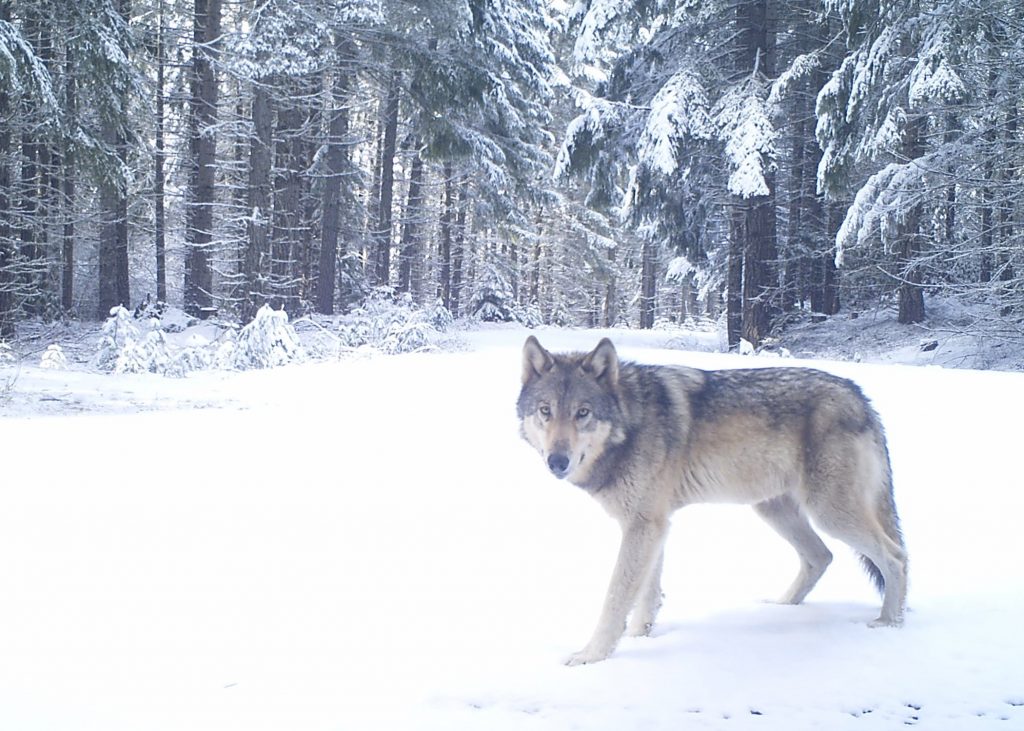
USFWS Denies Petitions To List Wolves, Will Start National Recovery Plan
Federal wildlife overseers today denied petitions to list gray wolves in the Northern Rocky Mountains and the Western United States, stating that the predators “do not meet the definition of an endangered species or a threatened species.”

But before you get carried away, the press release and FAQs from the US Fish and Wildlife Service announcing the moves repeatedly state that the legal status of wolves – delisted in the Northern Rockies including the eastern thirds of Washington and Oregon, still federally listed outside there – remains the same as before.
“It means status quo for Washington wolves,” reiterated Julia Smith, WDFW endangered species manager in Olympia.
Boiled down, today’s decision on the petitions was a non-action-forcing 12-month finding that followed USFWS’s previous decision to take a deeper dive into the status of wolves at the request of various organizations.
What is changing, however, is the development of a first-ever national recovery plan for the controversial and iconic animals, which USFWS said it plans to roll out by December 12, 2025.
“Recovery plans provide a vision for species recovery that is connected to site-specific actions for reducing threats and conserving listed species and their ecosystems,” the agency’s press release stated.
A statement out from WDFW this afternoon said it “plans to engage in these processes.”
Wolf advocates expressed disappointment that their petitions had been denied, claiming that state management measures in Idaho and Montana, where wolves were delisted in 2011 and continue to thrive, “threaten to roll back one of America’s greatest wildlife restoration achievements,” according to a statement from the Endangered Species Coalition.
Today’s actions follow the late 2020 USFWS delisting of gray wolves throughout the Lower 48, including in the western two-thirds of Washington and Oregon, which led to a number of petitions to relist them in various areas and a federal judge to vacate the rule.
That led USFWS to perform the deep dive into threats facing wolves, their prey base, the interconnectivity of some 2,800 individuals in 286 packs across seven states, as well as harvest and disease modeling.
“After assessing the best available data, we concluded that the gray wolf in the Western United States is not in danger of extinction, or likely to become in danger of extinction in the foreseeable future, throughout all of its range or in any significant portion of its range. Therefore, we find that listing the gray wolf in the Western United States as an endangered species or a threatened species under the Act is not warranted,” states a prepublication notice pending on the Federal Register.
It states that over the next 100 years, wolf populations are modeled to range from 935 wolves across all of Washington, Oregon, Idaho, Montana and Wyoming to 2,161 under the harshest and least impactive harvest and disease scenarios. Ninety-five-percent confidence intervals were 739-1,091 and 1,684-2586, respectively.
Washington steelheaders and state managers are nervously awaiting another 12-month finding, this one from NMFS on Olympic Peninsula winter- and summer-runs, which should be out any day now.
